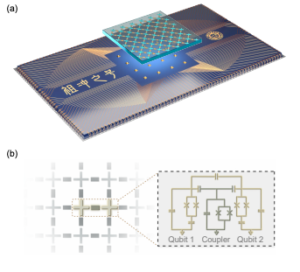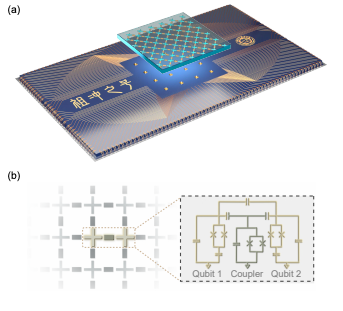A Chinese team led by Jian-Wei Pan, often called that country’s Father of Quantum, is reporting that they have achieved another demonstration of china’s quantum supremacy with a superconducting quantum computer, Zuchongzhi.

You may also like:
- Chinese Researchers Make Advance in Helium-Cooling System
- Chinese Quantum Software Startup Announces Angel Round in The ‘Tens of Millions of Yuan’
- Chinese Scientists Say Quantum Radar Could End Stealth Advantage
China Quantum Supercomputer Performs Supremely
In a study reported in the pre-print server ArXiv, the researchers perform random quantum circuits sampling for benchmarking on the superconducting quantum processor developed by the team. Zuchongzhi is described as a two-dimensional programmable computer composed of 66 functional qubits in a tunable coupling architecture.
The sampling was performed for up to a system size of 56 qubits and 20 cycles to test the performance. They found that the computational cost of the classical simulation of this task is estimated to be 2-3 orders of magnitude higher than the previous work on Google’s 53-qubit Sycamore processor.

“We estimate that the sampling task finished by Zuchongzhi in about 1.2 hours will take the most powerful supercomputer at least 8 years.”
“We estimate that the sampling task finished by Zuchongzhi in about 1.2 hours will take the most powerful supercomputer at least 8 years,” the team reports. “Our work establishes an unambiguous quantum computational advantage that is infeasible for classical computation in a reasonable amount of time. The high-precision and programmable quantum computing platform opens a new door to explore novel many-body phenomena and implement complex quantum algorithms.”
“We also expect this large-scale, high-performance quantum processor could enable us to pursue valuable NISQ quantum applications beyond classical computers in the near future.”
The researchers added that the whole system behaved as predicted when the system size grows from small to large, confirming our high-fidelity quantum operations and low correlated errors on the processor.
They report: “The quantum processor has a scalable architecture that is compatible with surface-code error correction, which can act as the test-bed for fault-tolerant quantum computing. We also expect this large-scale, high-performance quantum processor could enable us to pursue valuable NISQ quantum applications beyond classical computers in the near future.”
Random quantum circuit is considered a good way to demonstrate quantum computational advantages, and has potential applications in certified random bits, error correction, and hydrodynamics simulation, the team suggests.
More efficient classical simulation approaches are expected, the team said.
“On the one hand, the competition between quantum and classical computing will continue; on the other hand, more efficient classical simulation methods are necessary for large-scale quantum computing benchmarking,” the team members said.
In December 2020, researchers reported that china’s quantum supercomputer performed a quantum computation called “Gaussian boson sampling” (GBS) much faster — in fact, 100 trillion times faster — than a supercomputer could. That quantum supercomputer, named Jiuzhang, uses optical circuits.
Pan is a full professor of physics at the University of Science and Technology of China. Other institutions involved in the work include: Hefei National Laboratory for Physical Sciences at the Microscale and Department of Modern Physics, University of Science and Technology of China; CAS Center for Excellence in Quantum Information and Quantum Physics; Shanghai Research Center for Quantum Sciences and Henan Key Laboratory of Quantum Information and Cryptography, Zhengzhou.
The classical calculations were performed on the supercomputing system in the Supercomputing Center of University of Science and Technology of China, as China claims quantum supremacy.
The team partnered with QuantumCTek Co., Ltd., to support the fabrication and the maintenance of room-temperature electronics.
The work was supported by the National Key R&D Program of China, the Chinese Academy of Sciences, Anhui Initiative in Quantum Information Technologies, Technology Committee of Shanghai Municipality, National Natural Science Foundation of China, Shanghai Municipal Science and Technology Major Project, Natural Science Foundation of Shanghai, Key-Area Research and Development Program of Guangdong Provice and the Youth Talent Lifting Project.
ArXiv papers are not peer-reviewed and usually serve as the first step toward the process of publishing in a scientific journal.
If you found this article to be informative, you can explore more current quantum news here, exclusives, interviews, and podcasts.
















